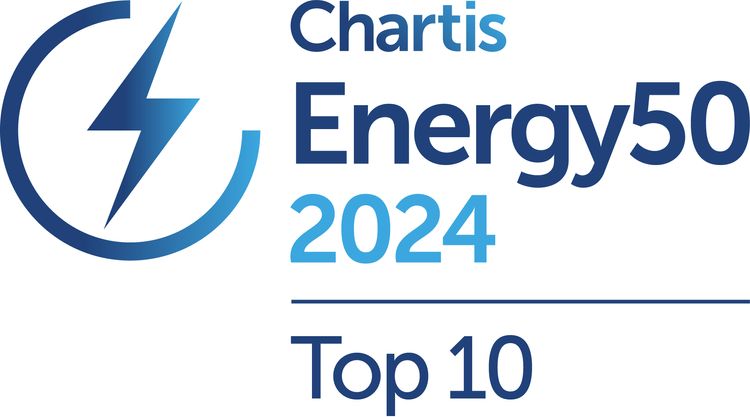Pros and Cons of Moving from In-House to Purchased ETRM

Your IT team may have developed an in-house ETRM/CTRM that's falling short and lacking some necessary functions or features. Even worse, maybe you've taken things into your own hands and gone back to spreadsheets.
You've probably heard (or maybe even lived through) the horror stories of long, costly implementations and how difficult it is to find the right software. But you shouldn't settle for slow, outdated, or costly software… and you certainly shouldn’t go back to error-prone spreadsheets.
When we’ve helped companies move onto our software from their in-house solution, we’ve sometimes found numbers that didn’t quite add up. This can be a common issue with homegrown ETRMs because there's more room for human error. Something as simple as a wrong number or formula can throw your entire system off. And you don’t want those errors to affect your reports.
If this sounds familiar, it's time to find the problem and quickly identify a solution. It’s time to purchase an ETRM. In this article, we’ll help you weigh your options and give you peace of mind as you move from an in-house ETRM to purchased software.
Table of Contents
- What are the pros of migrating to enterprise ETRM software?
- What are the cons of migrating to ETRM software?
Steps to a Successful ETRM System Migration
- Step 1: Identify your pain points
- Step 2: Agree on your need-to-haves and nice-to-haves
- Step 3: Start researching options
- Step 4: Organize demos
- Step 5: Select the best ETRM for your team
Conclusion
What are the pros of migrating to enterprise ETRM software?
Let's start with the value of purchasing software developed and maintained by third-party experts:
- Saves time and money in the long run because you don’t need to allocate internal resources to building and maintaining proprietary software
- Increases the accuracy of calculations and reports because a third-party should submit their software to rigorous and regular QA testing
- Reduces or eliminates data silos
- Provides more features than in-house solutions
- Reduces the chance of human error
- Increases reliability because there aren’t hosting worries or tech upkeep
- Adds features and fixes issues quickly due to the demands of a broad customer base
Purchasing an ETRM will drive productivity and cut costs for your team. And, there are even more pros when you implement Molecule’s ETRM:
- Designed for optimal usability
- Works with the most modern tech
- Easier budgeting (fixed-price)
- Proactive and responsive support
We’re one of the few cloud-native ETRMs on the market that prioritizes modern tech and design and offers fixed-fee prices. With a cloud-native SaaS ETRM, you can expect optimal usability, quicker implementations, easy maintenance, and frequent updates.
“With 2022’s record year for new customer acquisition, Molecule continuously discovers new ways to improve our application, expand the capabilities of our product, and make risk management easier for our customers.” - Dustin Whipple, VP of Global Sales
What are the cons of migrating to ETRM software?
Let’s address some of the setbacks you may experience moving from an in-house to a purchased ETRM:
- Finding the right enterprise solution can be cumbersome
- Planning for upfront purchasing costs, which could be variable and uncapped
- Allocating resources for onboarding and implementation
- Learning new software
- Not having control because you’re dependent on an outside vendor
With many solutions available, finding the best one can feel overwhelming. Then the initial costs, implementation, and training can be even more intimidating. However, the pros will likely outweigh the cons once you're willing to take the leap.
Want to learn more about the price of ETRM software? Check out our blog post, "How Much Does ETRM Software Cost in 2023?"
Steps of a Successful Migration
To make the process of moving to SaaS software more likely to succeed, we've laid out a step-by-step approach.
Step 1: Identify your pain points
Think about the problems and frustrations you have with your current software. Many of our customers started using Molecule because their old software was:
- Slow and outdated
- Difficult to use and access - especially remotely
- Poorly designed
- Struggling to adapt to change and new products/asset classes
- Unreliable and unpredictable
To help aid this process, involve the IT department and other important stakeholders in this conversation. Then, define the roles each person will play and determine who will be researching, attending demos, deciding, and handling the legal paperwork. Identifying all of the roles and responsibilities in advance ensures the most important voices on your team are heard and that the process runs smoothly.
Step 2: Agree on your need-to-haves and nice-to-haves
Once you've identified your frustrations, decide what your absolute must-haves are. Consider your most important business processes and how an ETRM could better automate and assist with them. You can also think about some nice-to-have features, even if they’re not requirements.
These may correlate with your pain points or align with your current software's capabilities. What does your current ETRM do that you'd expect from new software?
Some deal breakers our customers have had included:
- Software must be easy to use
- End-of-day reports must be automated and accessible
- Integrations with particular exchanges or other systems must be possible
- Implementation must be fast and cost-effective
Keep your expectations reasonable and attainable because you may not find an ETRM that meets all of your needs. Once you've determined your deal breakers, you should move into the next step of your ETRM search.
Step 3: Start researching options
Now that you have an idea of what you're looking for start researching the best ETRM for your company.
G2 is a great place to start - you can easily compare vendors, get an overview of features, and see what customers have to say about each product. If you find a few you're interested in, check out some case studies and/or testimonials on companies’ websites for some additional insight.
You can also consult third-party vendor research and analysis, including Chartis or CTRM Center’s sourcebooks, for a breakdown of options and features.
Here are some questions you may want to answer as part of your research process:
- Is the ETRM cloud-native, cloud-enabled, hybrid, or on-prem? This addresses issues of scalability and security.
- What integrations does it offer? Think about market data, exchanges, FCMs, and other analytics tools that you use. The more integrations a software provider offers, the easier adding a new integration should be.
- How do ETRM system updates work? You’ll want to pay attention to the frequency of the updates to get an idea if the company is still investing in product development or if the product is stagnant.
- Is the vendor’s team responsive? Reach out on a contact form, LinkedIn, or email. Do you get a quick reply? While this doesn’t always correlate to the speed the support team offers, it can indicate how connected the company is and how easy communication and support can be.
- Do you like the look of the product based on screenshots or videos? People tend to use software they like to use. If something looks terrible or needlessly complicated, actually using it will be a chore.
Try not to get too overwhelmed during this process, and use the resources available for your selection process.
Step 4: Organize demos
Once you've narrowed your ETRM choices to about three options, schedule a demo with the sales team. This is the perfect time to get answers to more questions and see if the software is compatible with your business needs. Is it as easy as it looks? How easily can it handle that complicated product you trade?
Make sure you trust the sales team. If it seems like they're making lofty claims or empty promises, this will only cause more problems down the road. Look for a sales team that is realistic and honest with you about what to expect with their software, costs, and implementation.
Step 5: Select the best ETRM for your team
Once you've seen some product demos, it’s time to choose which ETRM you want to use.
During this stage, revisit your answers to the following questions:
- How will the decision be made?
- Who ultimately has the decision authority?
- Does someone else need to sign off on it?
This is an important step for your whole team to decide, so make sure to comply with the roles and responsibilities you established at the beginning of the process.
Once you’ve decided, we’ll send you a contract, you’ll make sure you agree and sign, and then we’ll kick off the ETRM implementation process!
Are you considering Molecule ETRM software?
At Molecule, we're always upfront with you during your selection process - we want to make sure we're a good fit for your company. We offer transparent fixed-fee pricing and don’t over-promise. We also hold SOC-1 and SOC-2 certifications to ensure our customers' data stays private, secure, and protected to the best of our ability.
During our onboarding process, each customer gets an experienced, in-house implementation team and project manager. Once you’re up and running in the Molecule system, your implementation team is there to answer your questions and support you if any issues arise.
Otherwise, you can expect frequent updates and features from our engineering team to optimize your risk management. You just can’t get all of that from a homegrown, in-house ETRM.
RELATED POSTS









